| المواضيع الأخيرة | » Printer-scanner identification via analysis of structured security deterrents الأربعاء سبتمبر 15, 2021 10:42 pm من طرف علاء الدين» استعراض دراسة طرق واساليب تأمين المستندات القيمة الإثنين يوليو 26, 2021 11:47 am من طرف علاء الدين» كتاب Detecting documents forged by printing andcopying الأربعاء مايو 26, 2021 8:51 pm من طرف علاء الدين» بحث حول تحديد تقنية الطباعة المستخدمة فى طباعة مستند الأربعاء مايو 26, 2021 8:46 pm من طرف علاء الدين» الترمييز بالباركود الأحد أبريل 18, 2021 1:25 pm من طرف علاء الدين» طريقة عمل الاختام بالليزر الثلاثاء مارس 30, 2021 7:59 pm من طرف raouf» جهاز عمل الاختام المكتبية واختام الاكريليك الجمعة مارس 12, 2021 9:36 pm من طرف Admin» Banknote Recognition Methods by Various Sensors الجمعة مارس 12, 2021 9:19 pm من طرف Admin» كتاب advances in digital forensics الجمعة مارس 12, 2021 9:16 pm من طرف Admin» كتاب Currency Security and Forensics الجمعة مارس 12, 2021 9:10 pm من طرف Admin |
|
| | Counterfeit Currency |  |
| | | كاتب الموضوع | رسالة |
|---|
Admin
مدير الموقع

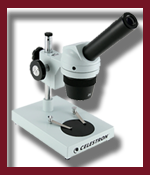

رقم العضوية : 1
عدد المساهمات : 239
التقييم : 4
تاريخ الميلاد : 18/12/1980
تاريخ التسجيل : 12/03/2013
العمر : 43
 |  موضوع: Counterfeit Currency موضوع: Counterfeit Currency  الأربعاء أبريل 10, 2013 10:54 pm الأربعاء أبريل 10, 2013 10:54 pm | |
| Counterfeit Currency Introduction Since ancient times and across civilizations, many types of items, including stones, shells, spices, chocolate, beads, livestock and various metals, have been used as symbols of value for purposes of trade. It was not until after the seventeenth century that printed paper came into use as the chief instrument for direct transactions. When Marco Polo brought back tales that paper currency served as money in China in the thirteenth century, he was met with disbelief in the West, where trade was based on coins, crops and service. Yet, by this time, paper money in China already dated several centuries to the T’ang dynasty. The use of paper currency survived in China until the end of the fourteenth century (under the Ming dynasties),after which its use was abandoned. In China,the long-standing use of paper money was linked to the heavy-handedness of the centralized government in forcing its acceptance and in refusing alternative sources of personal value. In contrast,in the West,the first appearances of paper currency were prompted by emergency situations in the form of coin shortages. In Sweden in 1661, a shortage of silver forced the first appearance of paper money but its use was met with distrust and fear that the nation’s now overly portable wealth would quickly flee the country in the pockets of foreigners. A few years later,paper money was introduced in North America when a delay in the shipment of soldiers’ pay in Canada prompted authorities to monetize and distribute playing cards – the highest quality paper available – overprinted with monetary values,official seals and signatures in lieu of the normal payments in the coin of the realm. Counterfeiting As long as money has existed,so has counterfeiting. In fact,although the US Constitution does not specifically authorize the federal government to issue currency,it does specifically authorize punishment for counterfeiting (Article 1,section  . Penalties for counterfeiting have often been severe,to include execution. Some banknotes have even carried printed warnings such as ‘To Counterfeit Is Death’. In fact, counterfeiters are still executed in China today. In the USA,however,the maximum sentence is not so harsh: 15 years imprisonment and $5000 fine. There were two periods in US history when floods of counterfeit overwhelmed the paper currency supply (during the Continental period and the decades before the Civil War) and threatened its demise. In the middle part of the nineteenth century, so-called ‘counterfeit detectors’ were commonly used. These were handbooks that described all the genuine notes in circulation,which were issued by state and local banks,and explicated counterfeit flaws in great detail. By the start of the Civil War, an estimated one-third of the currency in circulation was fraudulent. This counterfeiting problem,along with the need to finance the Civil War,led the US Government in 1863 to authorize a national currency,to be manufactured by the US Treasury Department’s newly established Bureau of Engraving and Printing. By 1865,the need for an enforcement agency to fight counterfeiting and protect the integrity of the new currency led to the establishment of the US Secret Service. The US Secret Service has been extremely effective in carrying out its responsibilities. Over the course of the twentieth century,the US dollar became so stable and trustworthy that it came into popular use throughout the world as not only an instrument of trade,but also of stored value. Thus today,due to the stability of the currency,the economy and the society, the familiar US ‘greenback’ serves as a de facto world currency. In fact,at the end of the 20th century almost $600 billion in paper currency is in circulation worldwide,and an estimated 60% is held abroad, escalating the importance of protecting US currency from counterfeiting. Genuine Currency The materials and characteristics of genuine banknotes are produced to certain specifications,but no such standards exist for counterfeit banknotes. Individual counterfeiters set their own standards,and these standards vary widely. Because the counterfeits lack standards,the process of their identification becomes one of proving a negative,i.e. that the specimen is not genuine. Thus,knowledge of the genuine specimen is critical to identifying counterfeits and evaluation is best carried out by direct,side-by-side comparison of the suspect document with a genuine specimen. Security Genuine banknotes are designed to be difficult to counterfeit. They are made with special materials applied in ways not easily reproduced,or accessible, to the general public. Banknotes have traditionally been printed by intaglio,offset and typographic printing processes on high-quality rag paper,using highly durable inks in an integrated design with a redundancy of information,especially regarding the value. The design and materials are chosen to be complemen-tary,each reinforcing the other,and to be challenging for counterfeiters to reproduce. Durability The specifications for genuine banknotes are determined not only by the need for resistance to counter-feiting,but also for resistance to wear. In its lifetime,a banknote will be handled daily,in multiple transac-tions,so its construction and materials must be highly durable and resistant to wear. This requirement extends not only to the base substrate and ink,but also to any special design elements,including applied features such as security threads and fibers,reflective or holographic foils,optically active materials and machine-detectable features. Production Method Paper/substrate The traditional substrate for security documents is a highly durable,rough,uncoated rag paper made with cotton,linen or a blend of cotton and linen; other pulps and materials may be added to enhance strength or tear properties,to reduce costs or to increase security. These additional materials may be fillers and binders,other cellulosic fibers to supplement the base materials,or distinctive materials such as natural or synthetic security fibers or planchettes (distinctive tissue or polymer disks added to the paper furnish) to distinguish the security paper from generic rag stock. The security fibers or planchettes may include special materials for overt,covert or forensic identification. The color of the paper may be white,off-white or other pastel shades that complement the design. A typical basic weight of the paper is 80-90 gm-2, although some banknote papers weigh in much lower and some higher. By tradition,security papers do not fluoresce under ultraviolet (UV) light stimulation,but the inclusions (security fibers,security threads and planchettes) and the inks may. Security threads,which are nonpaper materials (plastic,metal or actual threads),are inserted during the papermak-ing process and can be either entirely within the paper sheet or rise occasionally to the surface for a ‘windowed’ effect. Security threads are often used as convenient vehicles for introducing machine-readable features or more overt characteristics such as legible text or fluorescence properties. Security papers often include large portrait watermarks registered in the sheet to fall consistently in a localized area within the printed image. In some cur-rencies,the watermark represents an animal or other easily recognizable object that fits with the theme of the note design. These designs are formed directly in the papermaking process,in which areas of greater and lesser fiber density are created to give darker and lighter areas of the paper. Today,alternate substrates made from polymers or polymer-paper composites are in use or being introduced. Printing processes The three printing processes typically used in printing currency are intaglio,typographic (or letterpress) and offset (both wet and dry). Typically at least the main image (often a portrait) is rendered using intaglio, with the vignettes,background details,see-through images and often the reverse sides printed by offset; the serial numbers are added typographically. In some currencies,the images are printed using only offset; US currency is printed using only intaglio and typographic printing. Intaglio Traditionally,intaglio printing is used mainly for engraved artwork,special announcement cards,invitations and banknotes. In this method,the image to be printed is engraved as lines into a metal plate. Special intaglio ink,which is very viscous and opaque,is forced into the engravings,but wiped from the plate surface. It is then transferred under high pressure to the intended substrate. The utility of intaglio printing for security documents lies in the characteristic raised,embossed and feathered texture of the image that is not present when other methods are used. Microscopically,the ink can be seen to actually sit on the surface of the paper and spread along individual paper fibers (feathering), giving the image both visual and tactual texture (Fig. 1). These textural characteristics are especially important because anecdotal evidence suggests that counterfeits,whether on paper or polymer substrates, are often first questioned because they ‘just don’t feel right’. Typographic (letterpress) In the typographic,or letterpress,printing process,ink is applied to a raised surface and transferred by direct impression to the substrate. This method of ink transfer creates an effect known as ‘squeeze out’,in which the excess ink on the printing surface is forced toward the edges of the image on to the paper,creating a thick ink outline of the image (Fig. 2). These characteristics are dependent on the type of plate used,the printing pressure, and the substrate on which the image was printed. Typical examples of this process are typewriters and date stamps. The utility in banknote printing is that,since the image to be printed can be changed for each impression,typographic printing can be used to add unique identifiers such as serial numbers or bar codes | |
|   | | Admin
مدير الموقع



رقم العضوية : 1
عدد المساهمات : 239
التقييم : 4
تاريخ الميلاد : 18/12/1980
تاريخ التسجيل : 12/03/2013
العمر : 43
 |  موضوع: رد: Counterfeit Currency موضوع: رد: Counterfeit Currency  الأربعاء أبريل 10, 2013 10:57 pm الأربعاء أبريل 10, 2013 10:57 pm | |
| 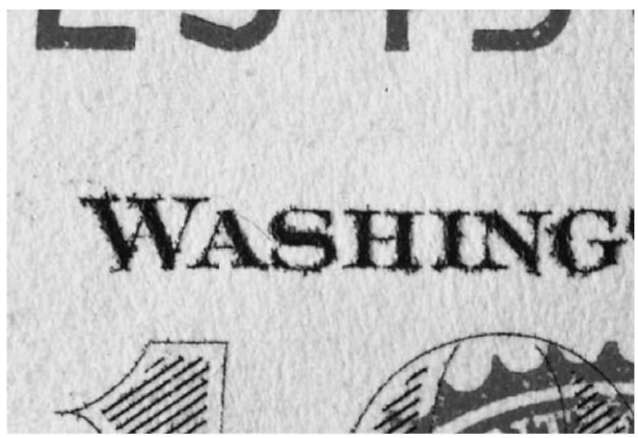 Figure 1 Intaglio printing on genuine US banknote.
Offset Offset lithographic printing is a planographic process,with neither raised nor engraved features in the printing plates. It is widely used in the commercial arena,especially for printing newspapers and other high-volume products. The image is created in a single surface,with the coplanar image and nonimage areas distinguished chemically so that the image parts will accept ink,but the nonimage areas will not. The ink is transferred from the treated plate on to an intermediate transfer (offset) blanket,then to the target substrate.
Microscopically,the ink appears sharp and even, without build-up of ink near the edges or middle. Since the process is planographic,the printed paper lacks any distortions,such as the indentations or embossing characteristic of letterpress or feathering of intaglio (Fig. 3).
Although a commonly used process,offset printing fills a special niche in security document printing. The modern,so-called perfecting presses used by banknote printers are capable of extremely close color-to-color and front-to-back registration. With this equip-ment,specially designed icons can be printed half on one side of the note and half on the other,forming the complete image only in transmitted light,when both halves can be seen. In addition,these presses are used to apply very fine and interwoven lines in a range of color saturations that challenge the traditional print-shop counterfeiter and modern reprographic equipment as well. With offset printing,the range of microprinted features is extended beyond the capabilities of intaglio.
Another offset process used by banknote printers is dry offset. Not to be confused with waterless offset,where the planographic image and nonimage areas are separated chemically,dry offset uses a raised image plate in combination with an intermediate transfer blanket. The resulting print often exhibits characteristics of letterpress,but lacks any embossment of the paper
عدل سابقا من قبل Admin في الأربعاء أبريل 10, 2013 11:00 pm عدل 1 مرات | |
|   | | Admin
مدير الموقع



رقم العضوية : 1
عدد المساهمات : 239
التقييم : 4
تاريخ الميلاد : 18/12/1980
تاريخ التسجيل : 12/03/2013
العمر : 43
 |  موضوع: رد: Counterfeit Currency موضوع: رد: Counterfeit Currency  الأربعاء أبريل 10, 2013 10:59 pm الأربعاء أبريل 10, 2013 10:59 pm | |
| 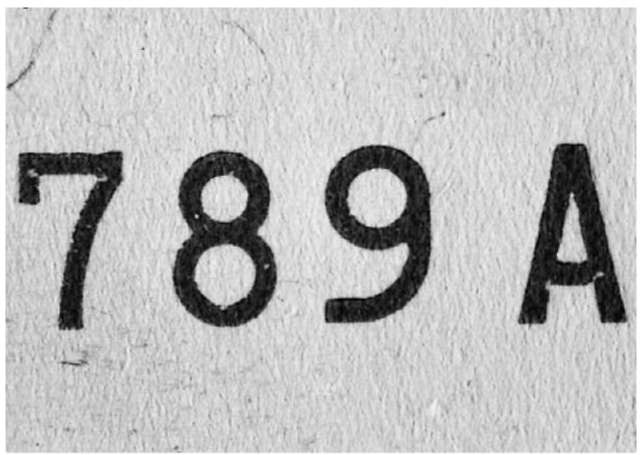 Figure 2 Typographic printing on genuine US banknote. 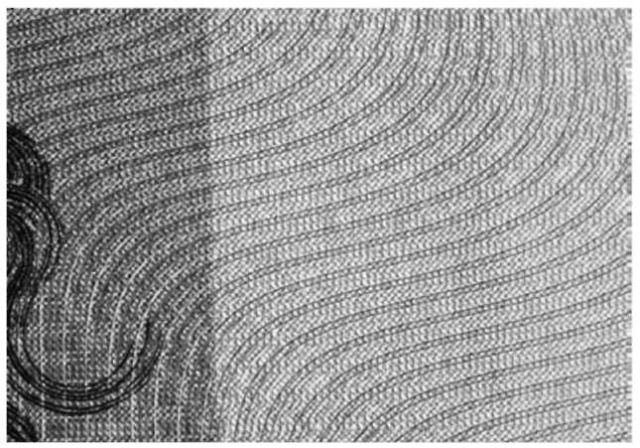 Figure 3 Offset printing. Screen Screen printing utilizes a stencil to separate the image and nonimage areas. The stencil is fixed to a screen support and allows ink to pass through the image areas to the substrate/paper. The screen pattern is often apparent in the images produced by this method (Fig. 4). The ink used for screen printing is thick and the image raised,similar to intaglio,but since no significant pressure is applied to the paper during printing,it lacks any embossing | |
|   | | Admin
مدير الموقع



رقم العضوية : 1
عدد المساهمات : 239
التقييم : 4
تاريخ الميلاد : 18/12/1980
تاريخ التسجيل : 12/03/2013
العمر : 43
 |  موضوع: رد: Counterfeit Currency موضوع: رد: Counterfeit Currency  الأربعاء أبريل 10, 2013 11:04 pm الأربعاء أبريل 10, 2013 11:04 pm | |
| Inks The inks used in security printing are chosen not only for their colour and printing properties,but also for their wear characteristics. Durability is important from two aspects. From a utilitarian standpoint, banknotes must withstand the repeated use and occasionally harsh treatment,even laundry and burial, received at the hands of the public. Therefore,to maintain its integrity and utility,a banknote must be sturdy. From a security aspect,the easy removal of the inks from a banknote leaves it vulnerable to counterfeiting abuse,enabling easier color-by-color reproduction or overprinting of higher denominations. For these reasons,inks used in printing banknotes are subjected to a full range of durability tests,including crumpling,laundering and chemical resistance.  Figure 4 Screen printing.  Figure 5 Green-to-black color shifting ink on genuine US banknote. Photographed using an angled mirror: green image (below) at normal; black (above) at an oblique angle.  | |
|   | | Admin
مدير الموقع



رقم العضوية : 1
عدد المساهمات : 239
التقييم : 4
تاريخ الميلاد : 18/12/1980
تاريخ التسجيل : 12/03/2013
العمر : 43
 |  موضوع: رد: Counterfeit Currency موضوع: رد: Counterfeit Currency  الأربعاء أبريل 10, 2013 11:07 pm الأربعاء أبريل 10, 2013 11:07 pm | |
| Applied features In modern banknotes,the security of the design may be further enhanced by inclusion of 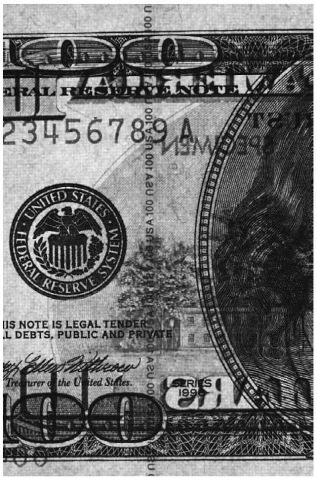 Figure 8 Genuine US $100 FRN security thread.  | |
|   | | Admin
مدير الموقع



رقم العضوية : 1
عدد المساهمات : 239
التقييم : 4
تاريخ الميلاد : 18/12/1980
تاريخ التسجيل : 12/03/2013
العمر : 43
 |  موضوع: رد: Counterfeit Currency موضوع: رد: Counterfeit Currency  الأربعاء أبريل 10, 2013 11:13 pm الأربعاء أبريل 10, 2013 11:13 pm | |
| Printed image In addition to substrate analysis,counterfeits can be identified through analysis of the printed image. The three-dimensional,fine-line detail created by the engraved intaglio plates of the genuine image cannot be easily duplicated except by the very skilled and determined counterfeiter. Because people are skilled at face recognition,the small deviations in the portraits on counterfeits compared to genuine notes are expected to be more noticeable than deviations in other portions of the image. The portrait therefore serves as a logical starting point for image evaluation. Standard light The first step in the evaluation of image quality is the comparison of the suspect note to a genuine note under good illumination. Differences in the images must be evaluated to determine if they are associated with wear,the natural variation of the genuine,a production anomaly,or because the note is counterfeit. Some design elements incorporated into the genuine image create distortions (moire) in counterfeit notes produced on low-resolution scanners and copiers or with half-tone processes. These distortions are obvious under normal viewing conditions. 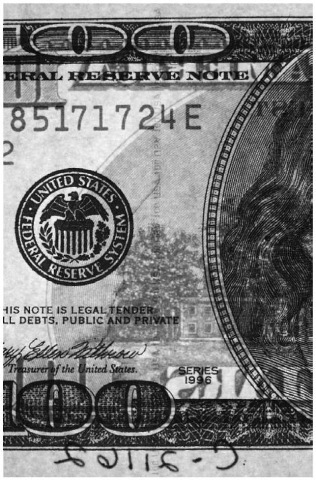 Figure 9 Counterfeit US $100 FRN security thread: simulated by offset printing. Other security features,like color-shifting inks or optically variable devices,should be evaluated using techniques appropriate for that feature. This may require altering the angle of observation and noting the change in image or color. Color differentiation of the inks can be aided by spectral analysis. Transmitted light Examination with transmitted light is used to identify misalignment of front-to-back registered features,which may be an indication of counterfeit. Alternate light Components with specific photoactive responses within banknote inks are common. Absence of a response or an incorrect response may be an indication of a counterfeit note. Microscopic examination Security features The low-resolving power of most copiers and printers prevents faithful reproduction of small-scale details in the genuine notes,including microprinted text. If the microprinting is not legible,the note may be counterfeit (Figs 14 and 15). 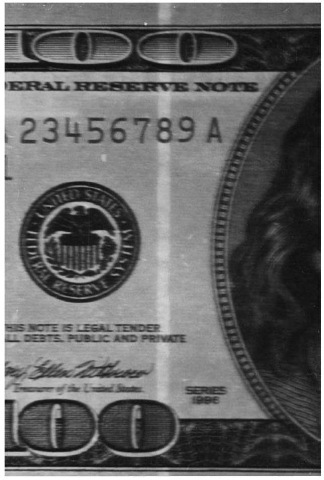 Figure 10 Fluorescence of genuine US $100 FRN security thread. Image deviation from genuine Some counterfeits are produced using methods and materials very similar to genuine (Figs 16 and 17). For these types of counter-feits,it may be easier to distinguish the counterfeit from the genuine based on differences in the images rather than on analyses from the materials used. Such cases require meticulous microscopic comparisons. 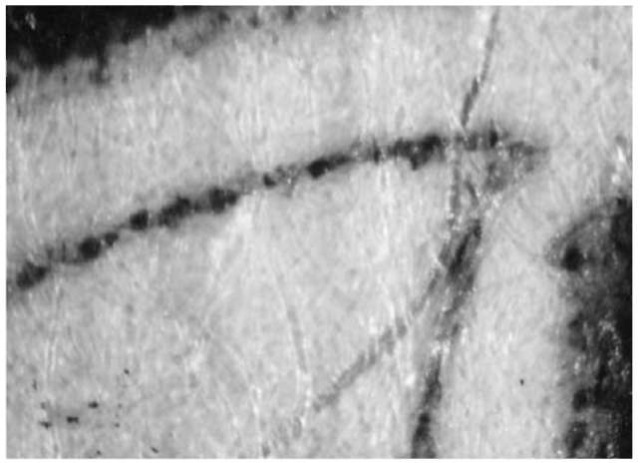 Figure 12 Genuine embedded security fibers. 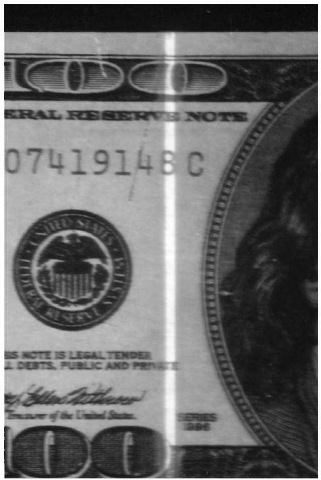 Figure 11 Fluorescence of counterfeit $100 FRN simulated security thread. Printing process determination Images created by the various printing processes have corresponding properties characteristic of the physical or chemical means by which they were produced (Table 1). The most reliable tool for the determination of the printing process is microscopic analysis. In addition to intaglio,typographic,offset and screen printing (Figs 18-21 ),the following methods are also used to print counterfeits. 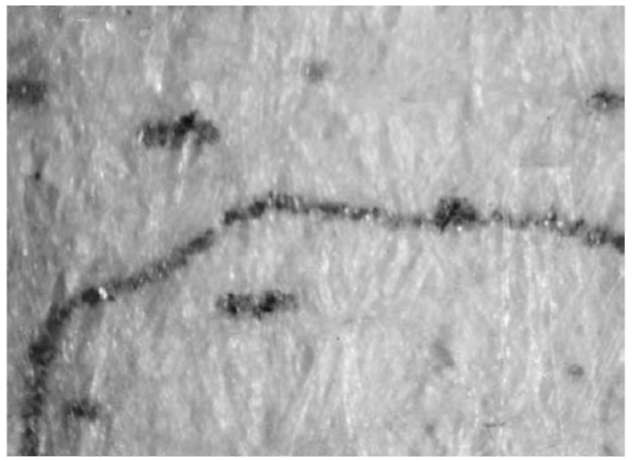 Figure 13 Simulated security fibers: printed offset. 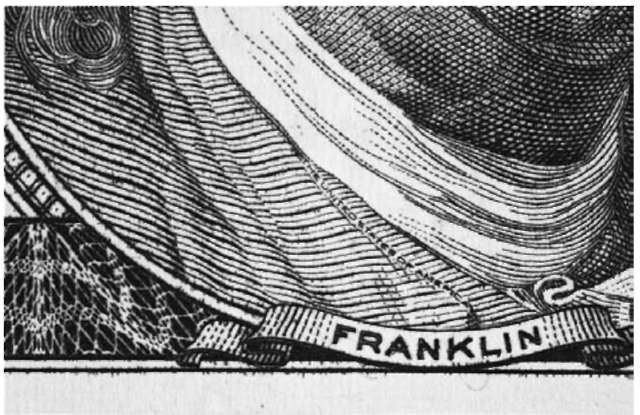 Figure 14 Microprinting on genuine US $100 FRN. 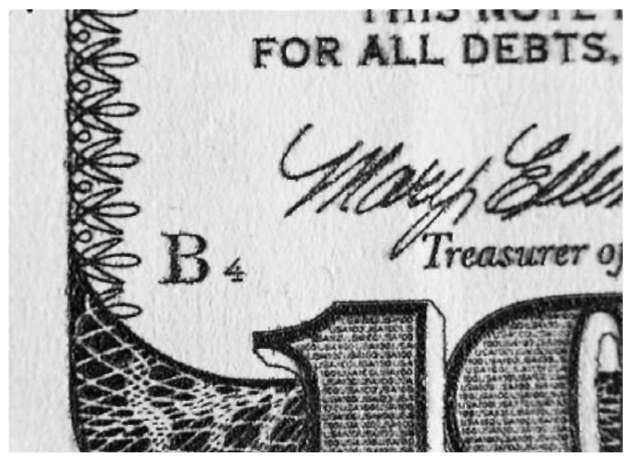 Figure 16 Genuine US $100 FRN.  Figure 18 Counterfeit US $100 FRN: printed intaglio. | |
|   | | Admin
مدير الموقع



رقم العضوية : 1
عدد المساهمات : 239
التقييم : 4
تاريخ الميلاد : 18/12/1980
تاريخ التسجيل : 12/03/2013
العمر : 43
 |  موضوع: رد: Counterfeit Currency موضوع: رد: Counterfeit Currency  الأربعاء أبريل 10, 2013 11:23 pm الأربعاء أبريل 10, 2013 11:23 pm | |
|  Figure 15 Microprinting on counterfeit US $100 FRN. Halftone offset lithography The lithographic process can print only in a single density; it cannot generate gradations of densities to create tonal variations. To print tonal variations,the halftone process is used. This process translates images,with the use of a screen or computer,into a series of dots ranging in size and/or placement,giving the illusion of continuous tone. 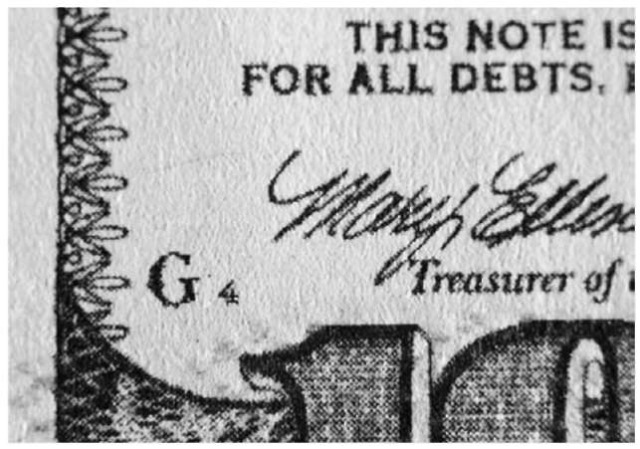 Figure 17 Counterfeit US $100 FRN: printed halftone offset. 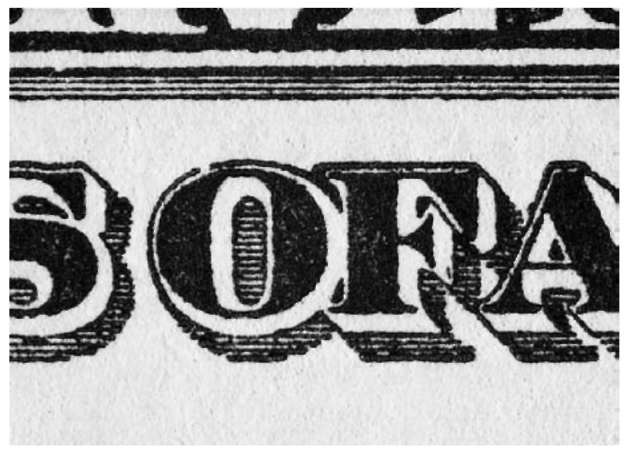 Figure 19 Counterfeit US $100 FRN: printed typographic.  Full/process color halftone Process color separation and printing is a method used in the commercial printing industry to translate the various shades and colors captured in color photography into a halftone print consisting of only four colors: cyan,yellow, magenta and black. Although the resulting print consists of only four colors,it creates the illusion of reproducing the wide range of colours contained in the original (Figs 22 and 23). 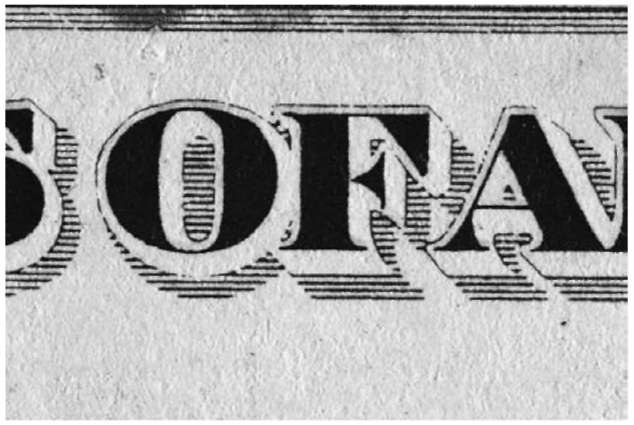 Figure 20 Counterfeit US $100 FRN: printed offset. | |
|   | | Admin
مدير الموقع



رقم العضوية : 1
عدد المساهمات : 239
التقييم : 4
تاريخ الميلاد : 18/12/1980
تاريخ التسجيل : 12/03/2013
العمر : 43
 |  موضوع: رد: Counterfeit Currency موضوع: رد: Counterfeit Currency  الأربعاء أبريل 10, 2013 11:25 pm الأربعاء أبريل 10, 2013 11:25 pm | |
| 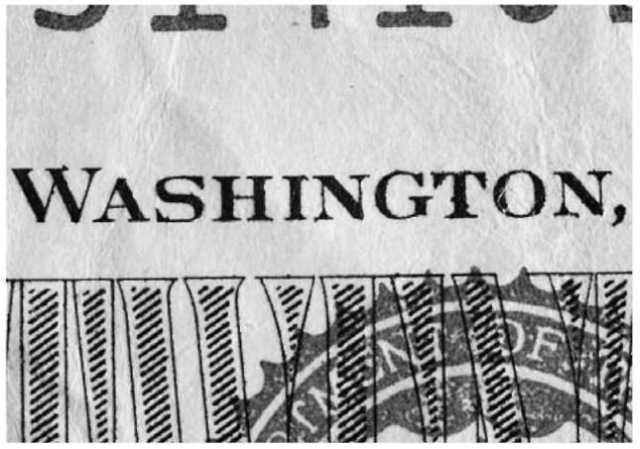 Figure 22 Genuine US $20 FRN. Electrophotographic Electrophotographic processes that use dry toner (e.g. most copying machines and laser printers) result in images composed of tiny dots of fused plastic particles. Microscopically,the toner looks like plastic melted on to the surface of the paper (Fig. 24).  Figure 21 Counterfeit US $100 FRN: printed screen. | |
|   | | Admin
مدير الموقع



رقم العضوية : 1
عدد المساهمات : 239
التقييم : 4
تاريخ الميلاد : 18/12/1980
تاريخ التسجيل : 12/03/2013
العمر : 43
 |  موضوع: رد: Counterfeit Currency موضوع: رد: Counterfeit Currency  الأربعاء أبريل 10, 2013 11:26 pm الأربعاء أبريل 10, 2013 11:26 pm | |
| 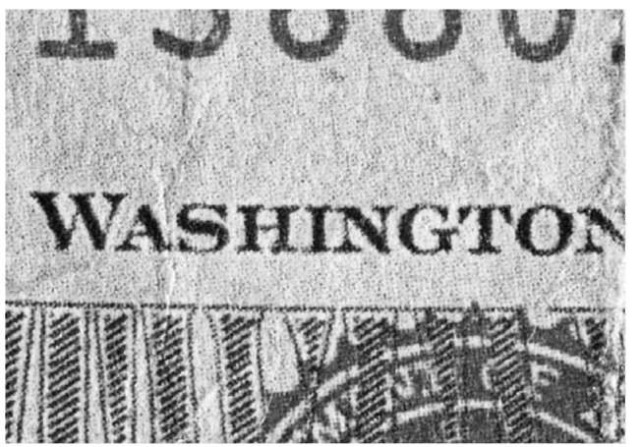 Figure 23 Counterfeit US $20 FRN: full color halftone offset. Inkjet Microscopically,these images are composed of ink spots that have been absorbed into the paper and appear flat. If two or more colours are printed close together,mixing of the inks might be apparent (Fig. 25). Chemical examination Spectrometric,elemental and chromatographic analyses of the pigments,dyes and vehicles provide further avenues for comparison. | |
|   | | Admin
مدير الموقع



رقم العضوية : 1
عدد المساهمات : 239
التقييم : 4
تاريخ الميلاد : 18/12/1980
تاريخ التسجيل : 12/03/2013
العمر : 43
 |  موضوع: رد: Counterfeit Currency موضوع: رد: Counterfeit Currency  الأربعاء أبريل 10, 2013 11:28 pm الأربعاء أبريل 10, 2013 11:28 pm | |
| Investigative Information from Counterfeit All aspects of the components and processes can provide valuable investigative information. This information may lead to the discovery of the counterfeiting operation. 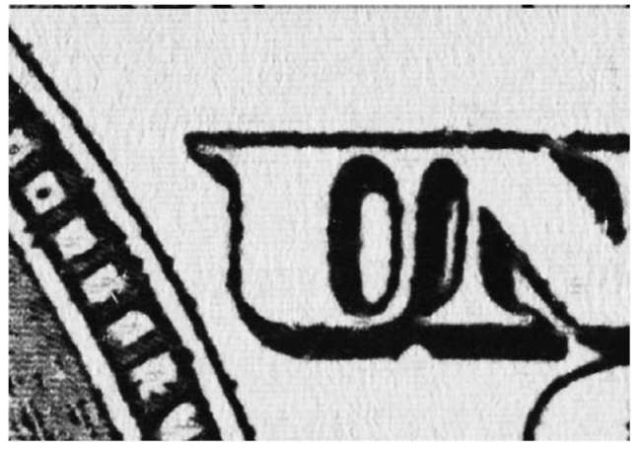 Figure 24 Counterfeit US $100 FRN: toner full color copier/printer. 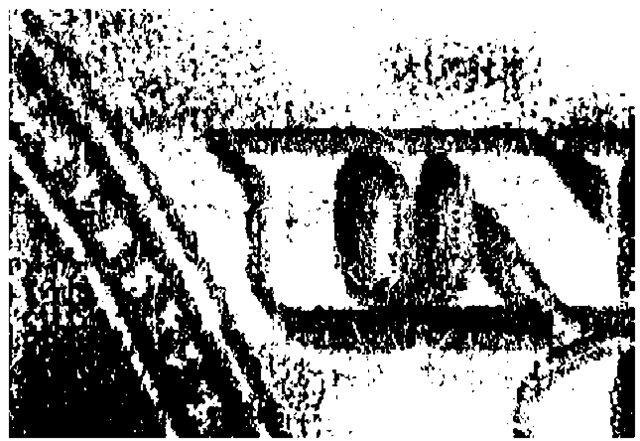 Figure 25 Counterfeit US $100 FRN: inkjet full color copier/printer. | |
|   | | Admin
مدير الموقع



رقم العضوية : 1
عدد المساهمات : 239
التقييم : 4
تاريخ الميلاد : 18/12/1980
تاريخ التسجيل : 12/03/2013
العمر : 43
 |  موضوع: رد: Counterfeit Currency موضوع: رد: Counterfeit Currency  الأربعاء أبريل 10, 2013 11:29 pm الأربعاء أبريل 10, 2013 11:29 pm | |
| Paper
Information such as the identity of the commercial paper based on identification of a watermark or identity of the country of origin by the paper’s security features may provide a starting point for an investigation. The paper analysis may also provide valuable evidential corroboration with other counterfeits or with seized paper from a suspected counterfeiting operation.
Image comparison
The examination and analysis of the image not only provides printing process and equipment information,but can also supply the means to associate the counterfeit note with the components of its production. These include the original genuine note used as a pattern for the counterfeiting as well as any photographic negatives,printing plates or digital images used in the process. These components can be associated with the counterfeit based on the uniqueness of each genuine note and the transference of these unique characteristics to the images used to create the counterfeit. Image comparisons may also enable portions of different counterfeit notes,such as the front- or back-plate images,to be linked.
Inks Investigative and corroborative information may be obtained through the use of comparison libraries to identify the manufacturer of an ink used to produce a counterfeit note. | |
|   | | ezzat sadek
خبير جديد



رقم العضوية : 3
عدد المساهمات : 32
التقييم : 0
تاريخ الميلاد : 09/08/1983
تاريخ التسجيل : 24/03/2013
العمر : 41
 |  موضوع: رد: Counterfeit Currency موضوع: رد: Counterfeit Currency  الخميس أبريل 11, 2013 9:06 pm الخميس أبريل 11, 2013 9:06 pm | |
| | |
|   | | ayman@gawab.org
موقوف


رقم العضوية : 89
عدد المساهمات : 31
التقييم : 0
تاريخ الميلاد : 01/01/1970
تاريخ التسجيل : 28/12/2013
العمر : 54
 |  موضوع: رد: Counterfeit Currency موضوع: رد: Counterfeit Currency  السبت ديسمبر 28, 2013 11:45 am السبت ديسمبر 28, 2013 11:45 am | |
| 3333333333333333333333333333333kkkkkkkkkkkkkkk | |
|   | | mohmed wagdy
خبير جديد



عدد المساهمات : 33
التقييم : 0
تاريخ الميلاد : 01/01/1970
تاريخ التسجيل : 24/05/2014
العمر : 54
 |  موضوع: رد: Counterfeit Currency موضوع: رد: Counterfeit Currency  الأحد مايو 25, 2014 12:41 am الأحد مايو 25, 2014 12:41 am | |
| | |
|   | | | | Counterfeit Currency |  |
|
مواضيع مماثلة |  |
|
| | صلاحيات هذا المنتدى: | لاتستطيع الرد على المواضيع في هذا المنتدى
| |
| |
| |

